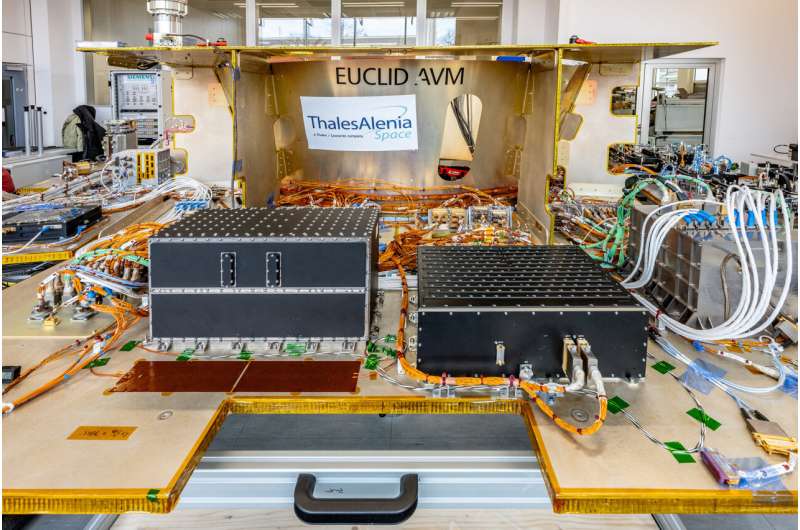This article has been reviewed according to Science X's editorial process and policies. Editors have highlighted the following attributes while ensuring the content's credibility:
fact-checked
trusted source
proofread
Euclid's 'twin' arrives at ESA mission control

ESA's Euclid observatory has begun to survey billions of galaxies on a quest to uncover the secrets of dark matter and dark energy from its vantage point 1.5 million km from Earth.
The spacecraft is operated by teams at ESA's ESOC mission control, who send commands, download data and status information and ensure the health and functioning of the satellite.
These teams rely on a one-of-a-kind test bench known as an "avionics model" to diagnose and solve issues experienced by the Euclid flight model in space and to test procedures and software on the ground before they are executed on the real spacecraft.
An avionics model is an electrically faithful replication of the satellite's avionics—the devices, hardware and software on a spacecraft that enable it to be controlled from the ground, including propulsion, attitude control, communication, computers and navigation, and its scientific instruments.
The Euclid Avionics Model began its life at the spacecraft's manufacturer, Thales Alenia Space in Torino, Italy, and was recently delivered to ESOC in Darmstadt, Germany.
"The Euclid flight control team now has direct access to a fully functional replica of the inner workings of the satellite," says spacecraft operations manager Micha Schmidt.
"The avionics model has already proven very important to the mission. It was used extensively during Euclid's demanding commissioning phase to validate the safety and effectiveness of critical updates to the Fine Guidance Sensor and other on-board software on the ground before we uploaded them to the spacecraft."
The flight control team is currently undergoing training on the use and maintenance of the Euclid model, which will remain at ESOC for the rest of the mission.
Provided by European Space Agency





















